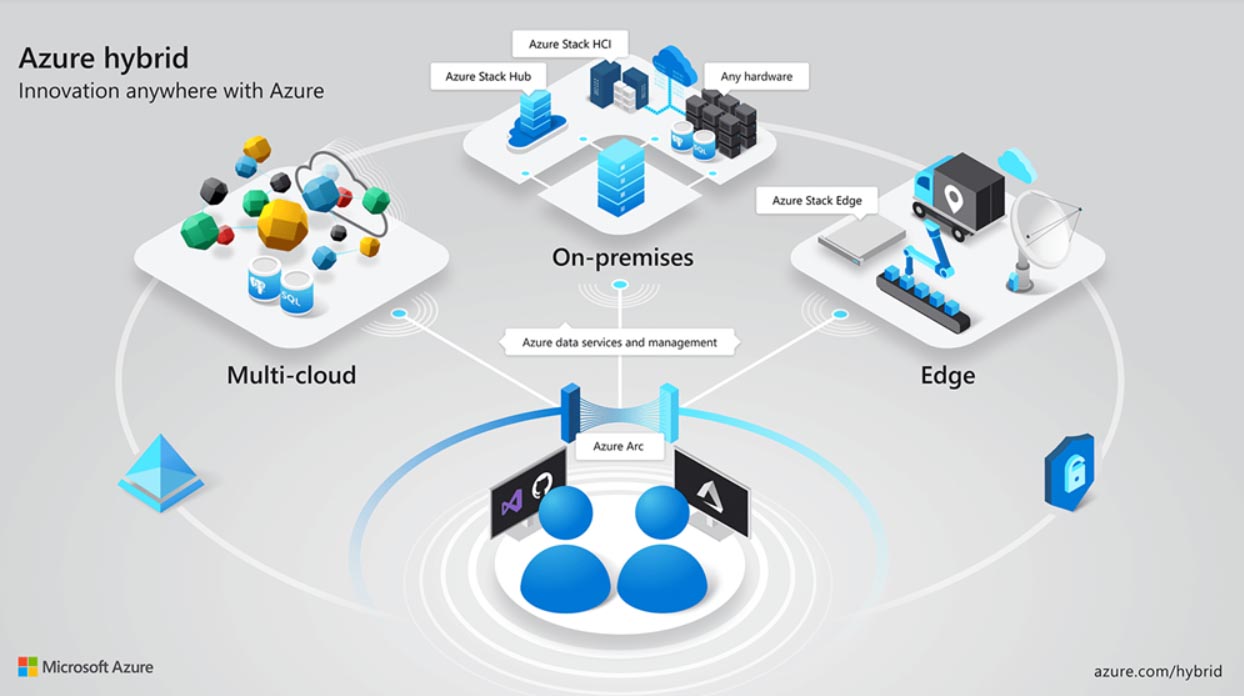Companies still prefer to use on-premise IT infrastructure
By MYBRANDBOOK

There has been a great hype for the cloud solution and services but the year 2020 will bring a huge shift for the on premise servers ,which persist in 98% of businesses, as the cloud services has found to be very very expensive. As per our analysis, this will lead to the growth of sales in the server, storage and other related products for the datacentre infrastructure is concerned.
After a strong performance in 2018, this market segment witnessed several ups and downs, creating a fluctuation IT infrastructure vendors in 2019. The demand for cloud computing solutions witnessed several ups and downs throughout 2019. After a decline in the revenues of second quarter of 2019, spending on cloud IT infrastructure rose in the third quarter.
On-premise IT infrastructures, despite some limitations, still hold value. These systems were typically custom-built to serve the purposes of the particular business. For some companies, it can be daunting to consider migrating to the cloud and moving their data from the servers in the basement to a data center.
The cloud market will grow 17 per cent in 2020 to total $266.4 billion, up from $227.8 billion in 2019. The industry will be worth $354.6 billion by 2022 with several large and small businesses turning to cloud solutions, as per the Gartner.
The trend of companies investing on cloud products is also likely to get better, predicts International Data Corporation (IDC) and the worldwide spending on security products and services will enjoy solid growth over the next five years as organizations continue to invest in solutions to meet a wide range of security threats and requirements.
In Box. Even though a new technology might be the buzzword of the moment, the traditional technology never really went away
One way of making a graceful migration is to take advantage of the hybrid model. The hybrid cloud is now estimated to be a $1.2 trillion opportunity. This way it is possible to migrate parts of your IT-infrastructure to the cloud while keeping the more sensitive parts on your own servers and the company's more sensitive data at risk by putting data into the cloud. However, on later date can move more parts of the IT-infrastructure to the cloud.
The momentum will accelerate further in 2020 as businesses in all sectors use hybrid multi-cloud strategies to rapidly roll out applications that accelerate the digital transformation of their businesses while delivering exceptional experiences to their customers. At the same time, enterprises will increasingly turn to advanced encryption and protection solutions to ensure that their clouds remain secure in today’s threat-rich environment, and they’ll embrace emerging technologies like edge to extend the reach of their capabilities.
One-third of organizations buy new servers because of the end of life for a server’s operating system. IT decisions makers have a number of motives for keeping hardware infrastructure and purchase new infrastructure dependent on refresh cycles. Moreover, Small- and medium-sized businesses, works on the same servers until the hardware fails or reliability concerns motivate new purchases.
As an early adopter, Microsoft has thought to bring Azure Services on-premises with Microsoft Azure Stack. Bradley Bartz, Principal Group Program Manager, Microsoft Azure Stack, and Matt McSpirit, Evangelist speaks on. Microsoft Azure stack: Azure services on premises, supported with the hardware vendors including DELLEMC, HPE and Lenovo.

In Box: In January 2020, Microsoft is dropping extended support for the popular Windows Server 2008. Support for SQL Server 2008 ends in July.
Enterprises rely on a hybrid technology approach to take advantage of their on-premises investment and, at the same time, utilize cloud innovation. As more business operations and applications expand to include edge devices and multiple clouds, hybrid capabilities must enable apps to run seamlessly across on-premises, multi-cloud, and edge devices, while providing consistent management and security across all distributed locations. Without coherence across these environments, cost and complexity grow exponentially. At Microsoft, we understand that hybrid cloud capabilities must evolve to enable innovation anywhere, while providing a seamless development, deployment and ongoing management experience.
Since its origin, Azure has been built to enable seamless hybrid capabilities – and we continue to deliver on our customers’ needs to enable purposeful innovation. Two years ago, we delivered Azure Stack to enable a consistent cloud model, deployable on-premises. Over the past year, we’ve extended Azure to provide DevOps for any environment and any cloud, we enabled cloud-powered security threat protection for any infrastructure, and we unlocked the ability to run Microsoft Azure Cognitive Services AI models anywhere. Today, we take a significant leap forward to enable customers to move from just hybrid cloud to truly deliver innovation anywhere with Azure.
Today, we are announcing Azure Arc, a set of technologies that unlocks new hybrid scenarios for customers by bringing Azure services and management to any infrastructure. Azure Arc is available in preview starting today. Bradley Bartz said.
The reality is that moving to the cloud introduces many more advantages than disadvantages, by providing better security, scalability, and therefore stability. The single biggest benefit of cloud solutions is that you as a company don't have to maintain the service yourself. The cloud solution providers focus on their core business, like the big real estate companies by giving the facility required for the technology to run smoothly and to ensure that their cloud-based service runs stable and securely for the companies using it.
Lastly, Edge computing, where computations are performed as close to where the data is generated as possible. Retailers will benefit from faster updates on consumer buying trends, factories will be able to perform predictive maintenance on equipment that’s about to fail, cellphone carriers will be able to support mobile gaming and augmented reality. It is more secure…


Nazara and ONDC set to transform in-game monetization with ‘
Nazara Technologies has teamed up with the Open Network for Digital Comme...

Jio Platforms and NICSI to offer cloud services to government
In a collaborative initiative, the National Informatics Centre Services In...

BSNL awards ₹5,000 Cr Project to RVNL-Led Consortium
A syndicate led by Rail Vikas Nigam Limited (abbreviated as RVNL), along wi...

Pinterest tracks users without consent, alleges complaint
A recent complaint alleges that Pinterest, the popular image-sharing platf...


Icons Of India : RAJENDRA SINGH PAWAR
Rajendra Singh Pawar is the Executive Chairman and Co-Founder of NIIT ...

ICONS OF INDIA : ROSHNI NADAR MALHOTRA
Roshni Nadar Malhotra is the Chairperson of HCLTech, a leading global ...

Icons Of India : Deepak Sharma
Deepak Sharma spearheads Schneider Electric India. He brings with him ...


IREDA - Indian Renewable Energy Development Agency Limited
IREDA is a specialized financial institution in India that facilitates...

NSE - National Stock Exchange
NSE is the leading stock exchange in India....

HPCL - Hindustan Petroleum Corporation Ltd.
HPCL is an integrated oil and gas company involved in refining, market...


Indian Tech Talent Excelling The Tech World - REVATHI ADVAITHI, CEO- Flex
Revathi Advaithi, the CEO of Flex, is a dynamic leader driving growth ...

Indian Tech Talent Excelling The Tech World - Lal Karsanbhai, President & CEO, Emerson
Lal Karsanbhai, President and CEO of Emerson, assumed the leadership i...

Indian Tech Talent Excelling The Tech World - ARVIND KRISHNA, CEO – IBM
Arvind Krishna, an Indian-American business executive, serves as the C...